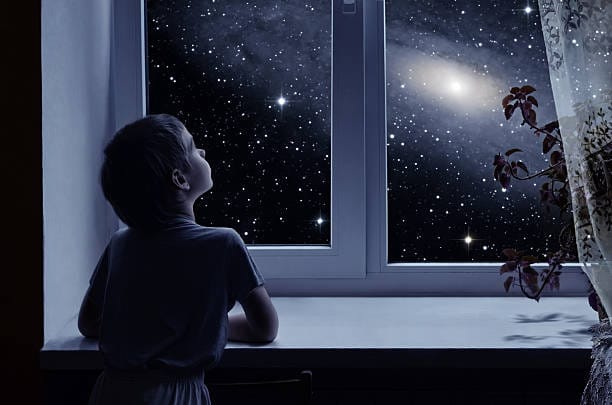It begins quietly. Maybe it’s the silence of your phone that never rings. The awkward pause after a joke you told yourself. The familiar walk down a crowded street where no one meets your eyes. Loneliness doesn’t always arrive with a loud knock. Often, it slips in like a shadow, unnoticed until it’s been there too long.
And while loneliness is a universal human experience, something almost everyone feels at some point in their life, its effects are far from invisible. Beneath the surface, in the folds of your brain, loneliness rewires circuits, disrupts chemical signals, and reshapes how you see the world—and yourself.
This is not just about feelings. Loneliness, especially when it becomes chronic, changes your biology. Your brain doesn’t just suffer in silence. It tries to adapt, to cope, to protect you—but often at a cost. What happens in the brain when we feel alone is one of the most important stories neuroscience is beginning to tell. And it begins with something deeper than sadness—it begins with our need for connection.
A Brain Built to Belong
Humans are social animals—not in the casual sense, but in a fundamental, evolutionary way. We are wired to belong. For early humans, isolation often meant death. Belonging to a tribe or group was essential for survival, providing safety, food, and support. Over time, the human brain evolved structures and systems specifically designed to manage social relationships.
Regions like the prefrontal cortex, amygdala, anterior cingulate cortex, and the temporoparietal junction all light up when we interact with others, interpret social cues, or try to understand another person’s perspective. Even our ability to feel empathy, guilt, or embarrassment—all distinctly human emotions—require complex neural coordination.
Connection isn’t a luxury. It’s not something we need only when we’re bored or restless. It’s built into the architecture of our minds. Which means when we’re deprived of it, the brain doesn’t just feel disappointment. It sounds an internal alarm.
Loneliness as a Biological Warning Signal
When you touch a hot stove, your nervous system sends a jolt of pain—a sharp, unmistakable message to protect yourself. Loneliness acts in a similar way. Scientists now understand that social pain—the ache of rejection, exclusion, or isolation—is processed in the brain much like physical pain.
In a groundbreaking study, researchers at UCLA used fMRI scans to show that when people were socially excluded—even in a virtual game—their anterior cingulate cortex lit up. This is the same region involved in physical pain processing. To the brain, social rejection hurts.
But why would the brain respond this way?
The answer lies in evolution. Pain, after all, is useful. It forces us to take action, to avoid danger. Loneliness is no different. It’s not just sadness—it’s a survival mechanism, urging us to seek out social bonds. It’s your brain’s way of telling you something is wrong, something essential is missing.
However, just like chronic physical pain, chronic loneliness can turn toxic. When the pain persists without relief, the warning system begins to malfunction—and that’s when things get dangerous.
The Lonely Brain Under Siege
Prolonged loneliness doesn’t simply make us unhappy. It begins to alter how the brain functions at a fundamental level. Let’s explore what actually happens inside the skull of someone who feels persistently alone.
1. Heightened Alertness and Perceived Threat
When people are lonely, their brains often shift into a kind of defensive mode. Studies have shown increased activity in the amygdala, the brain’s threat detection center. This makes lonely individuals more sensitive to social threats, like criticism or rejection—even when those threats aren’t real.
This is a cruel irony: the more lonely you are, the more likely you are to interpret the world as hostile. This makes it harder to trust, harder to reach out, and harder to form new bonds. The brain, trying to protect you from further social injury, ends up making connection even more difficult.
2. Sleep Disruption
One of the most subtle but harmful effects of loneliness is its impact on sleep. Lonely people often report fragmented or poor-quality sleep. Neuroscientific studies back this up—loneliness can increase nighttime brain arousal, making restful sleep harder to achieve.
From an evolutionary standpoint, this makes sense. In the wild, being alone meant being vulnerable. A solitary human needed to stay alert, even while resting. The modern brain hasn’t unlearned this ancient reflex. And chronic sleep deprivation, in turn, affects mood, memory, immune function, and cognitive performance—creating a vicious cycle.
3. Reduced Dopamine and Reward System Dysfunction
Human connection is pleasurable. Laughing with friends, hugging someone you love, sharing a meal—these moments flood the brain with dopamine and oxytocin, reinforcing bonds.
Loneliness disrupts this reward system. Brain imaging studies have found that in chronically lonely individuals, the brain’s dopamine circuits—especially those involving the nucleus accumbens—become less responsive. Things that once brought joy lose their shine. This can lead to apathy, withdrawal, and even symptoms of depression.
In some cases, people may seek artificial replacements—binge-eating, substance use, excessive screen time—chasing comfort from an increasingly unresponsive brain.
The Brain Shrinks From Disconnection
Over long periods, loneliness doesn’t just change function—it changes structure. In studies using neuroimaging, researchers have observed reduced grey matter in certain brain areas among people who report chronic loneliness, particularly in regions linked to emotional regulation, empathy, and social cognition.
One such region is the prefrontal cortex, which helps regulate emotions and behavior. Another is the hippocampus, crucial for memory and learning. While these changes may not be dramatic overnight, over months and years, they can compound—particularly in older adults. Loneliness is even considered a risk factor for cognitive decline and dementia.
It’s not just that lonely people feel mentally foggy. Their brains may actually be deteriorating faster.
The Feedback Loop of Social Withdrawal
Loneliness doesn’t just feel like social death—it behaves like it. The more isolated someone feels, the harder it becomes for them to rejoin the social world.
This is partly because of what’s happening in their brain: increased threat perception, reduced reward response, and cognitive fatigue all make social interaction seem overwhelming or risky. But there’s also a psychological loop: people who feel lonely may begin to assume that others aren’t interested in them, that they’re being judged, or that reaching out will only lead to more pain.
This self-protective posture creates a self-fulfilling prophecy. The brain, trying to shield you from further emotional damage, ends up building walls too high to climb.
Loneliness vs. Being Alone
Not all solitude is harmful. There is a powerful difference between being alone and feeling lonely. Solitude—when chosen—can be deeply restorative. It can increase creativity, promote self-awareness, and give the brain time to reflect and recharge.
Loneliness, however, is involuntary. It’s the perception that we are disconnected from others, even if people are around. It’s the difference between enjoying a quiet walk alone and feeling invisible in a room full of people.
Your brain understands this difference. When solitude is experienced as peaceful, the brain activates areas associated with self-reflection and creativity. But when it is experienced as painful disconnection, the brain enters a stress state, activating cortisol and inflammation pathways that erode health over time.
Can Loneliness Be Reversed? The Neuroplasticity of Hope
Here’s the good news: the brain is plastic. It can change. It can heal.
Just as the brain reshapes itself under the pressure of chronic loneliness, it can also rewire itself through reconnection, compassion, and positive social experiences.
Therapies like Cognitive Behavioral Therapy (CBT) can help reframe negative thought patterns and reduce the hyper-vigilance that makes loneliness worse. Mindfulness practices can train the brain to observe emotional pain without spiraling into self-criticism or despair.
Most powerful of all is authentic connection. Studies have shown that even brief moments of genuine social contact—making eye contact, sharing laughter, listening without distraction—can light up the reward centers of the brain and begin to reverse the loneliness-induced changes.
Social prescribing, a growing public health movement, encourages doctors to prescribe community activities—book clubs, gardening groups, volunteering—to patients suffering from loneliness. Early results suggest it works not just socially, but neurologically.
Every conversation, every hug, every act of empathy helps reshape a brain that has been starved of connection.
The Global Epidemic of Disconnection
Before the COVID-19 pandemic, loneliness was already on the rise. Then came lockdowns, isolation, remote work, and the disappearance of everyday social rituals. For millions, loneliness moved from a background hum to a defining feature of life.
Even now, as the world reopens, many find it hard to re-engage. The habits of isolation linger. The neural pathways shaped by disconnection don’t vanish overnight.
This is why understanding loneliness isn’t just a personal concern—it’s a public health issue. Loneliness is linked not only to mental health disorders but also to cardiovascular disease, lowered immunity, and early mortality. It’s as harmful as smoking 15 cigarettes a day, according to some estimates.
And it’s everywhere.
Teenagers with thousands of followers who feel unseen. Elderly people living alone without regular visitors. Young professionals in bustling cities who haven’t had a meaningful conversation in weeks. Loneliness doesn’t discriminate—but it thrives in silence.
The Science of Being Seen
So what does the brain really crave?
To be seen. To be understood. To matter.
In the MRI scanner, when someone receives a message of love, recognition, or belonging, the ventral striatum lights up—this is the brain’s reward hub. Oxytocin, the bonding hormone, flows. Cortisol levels drop. Inflammatory markers decline.
Biology responds to connection.
This isn’t philosophy—it’s physics. You are made to matter to someone. And when that need is met, the brain blossoms. It learns faster. It sleeps better. It dreams more boldly. It thrives.
Rewriting the Lonely Brain: One Act at a Time
Every act of kindness, every effort to reconnect—even if small—sends a message to the brain: you are not alone. You are part of something. You belong.
And here’s the secret: loneliness, once understood, becomes easier to manage. It becomes a compass. A message, not a curse. Your brain is telling you to reach out, to make a bridge, to come home to others.
Whether through therapy, friendship, community, or even self-compassion, the lonely brain can be brought back to life. The circuits can light again. The fog can lift. The voice inside that once said, “I don’t matter,” can be rewritten to say, “I am seen.”
You are not broken. Your loneliness is not weakness. It’s biology calling you back to your own humanity.
And the most beautiful thing about the brain? It listens.
Even when no one else is watching.






